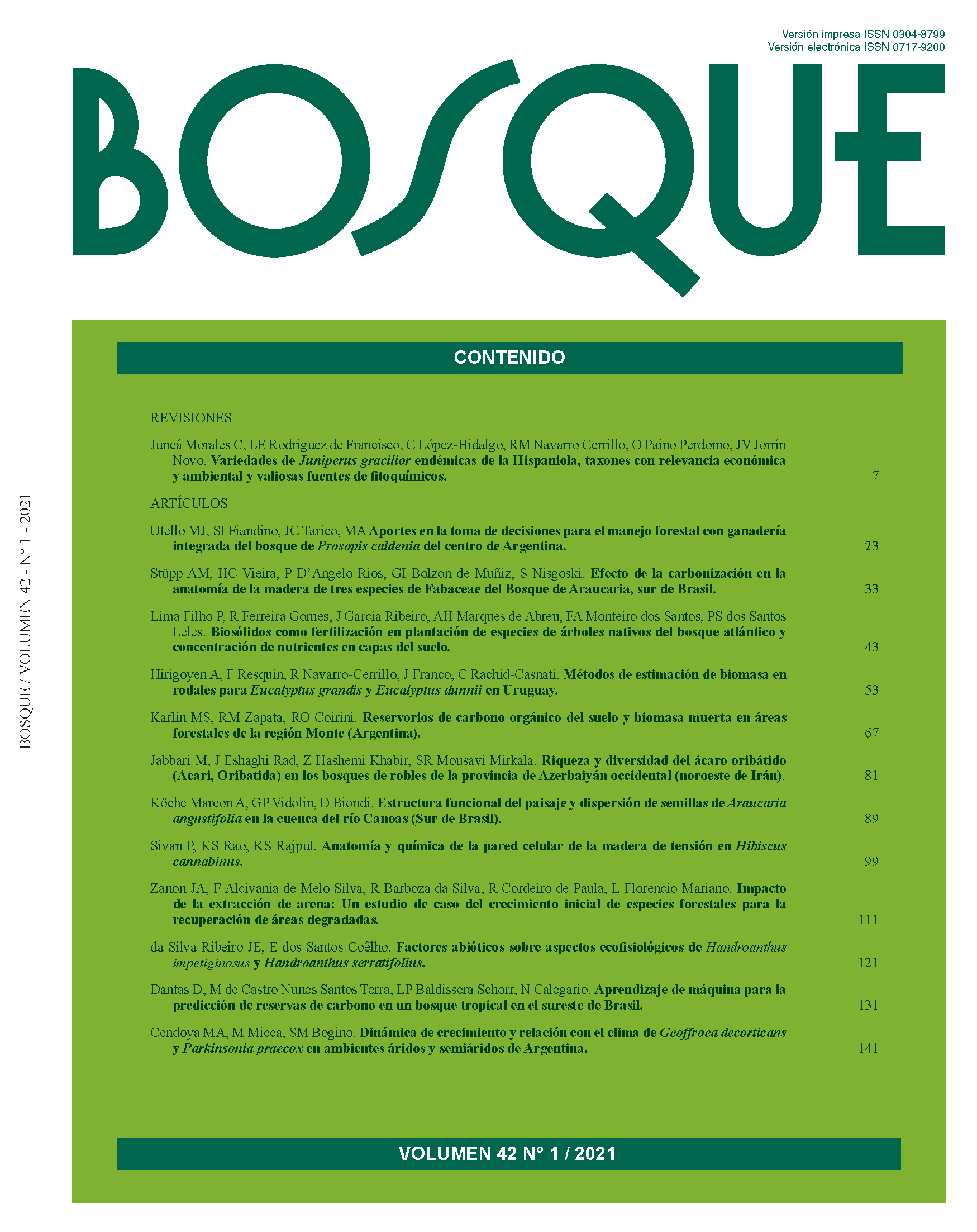Soil organic carbon and dead biomass pools in woodlands from Monte region (Argentina)
Conteúdo do artigo principal
Resumo
Soil and above-ground dead biomass are important carbon pools in drylands. They depend on local controls and patterns that should be studied. The objective of this work is to understand and quantify the influence of the vegetation canopy in the regulation of soil and dead biomass carbon stocks in woodlands of Monte region in Argentina. The hypothesis is that soil and dead biomass carbon stocks are lower in the intercanopy and higher under the canopy, independently of the type of canopy. Thirty sampling plots were selected, identifying three treatments: tree canopy, intercanopy and shrub canopy. In each sampling plot, soil and dead biomass were sampled. Four physiognomic-functional groups were identified. Prosopis woodlands accumulated about 38 Mg ha-1 of dead organic carbon (from soil, litter, and dead wood), followed by Suaeda woodlands with almost 35 Mg ha-1. Mixed woodlands showed average values around 27 Mg ha-1, while Bulnesia woodlands around 25 Mg ha-1. The vegetation canopy, and consequently, litter and dead wood input affected soil organic carbon in topsoil. Shrubs such as Larrea spp. had a restricted ability to enrich soil compared to Prosopis spp. Soil, litter and dead wood are significant pools of carbon and should be included in programs on reducing emissions in arid regions. The hypothesis is accepted partially; there is a remarked contrast in carbon content between soils under the tree canopy and off the canopy. However, the effect of shrub canopy is intermediate between both treatments.

